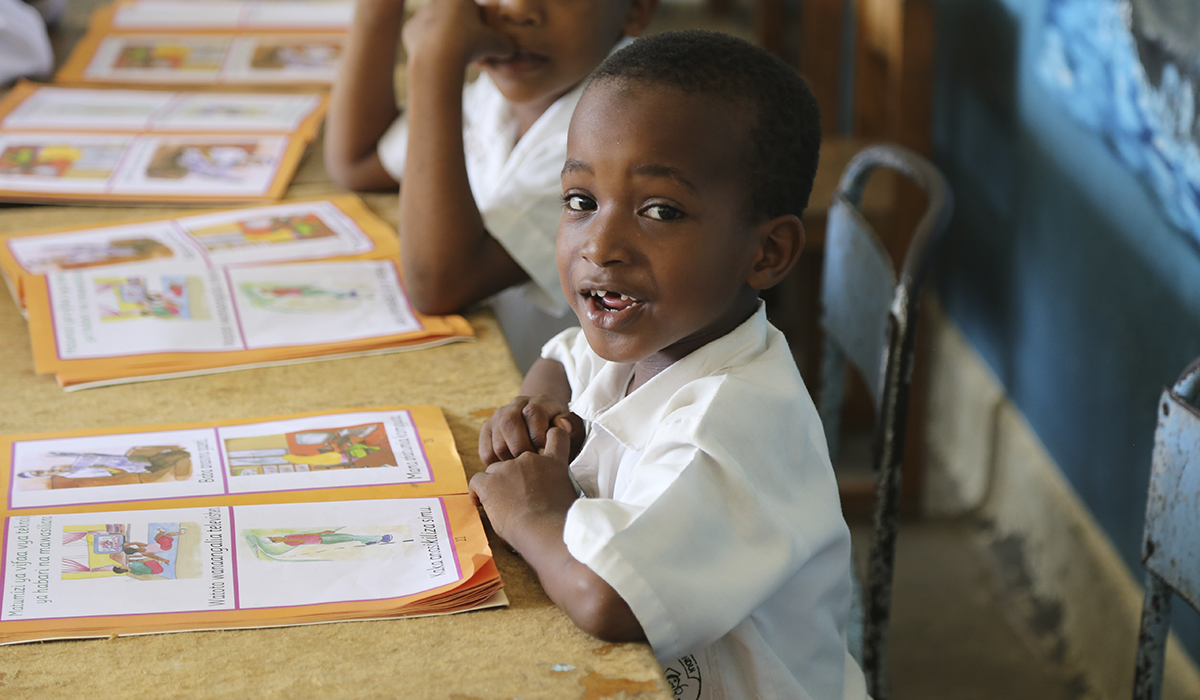Tool 1.3: Worksheet
Defining ‘Pre-Primary’ or ‘Early Childhood’ Education in Your Country Context

© GPE/Chantal Rigaud
Introduction
As you work toward including the pre-primary subsector in your country’s Education Sector Plan, there may be questions about exactly what this subsector includes.
Does it include services for 0-3-year-olds? Is it only about curriculum? Does it only refer to government-sponsored programs?
Some in your country may need support in defining pre-primary education (PPE) or early childhood education (ECE). You may also find that different groups in the country may have different ways of defining the subsector’s scope. By building consensus about key terminology and descriptions of the subsector, you may move toward a unified vision. This vision may clarify:
- what the subsector is;
- how it works in coordination with and/or as a sub-group of the education sector;
- how it exists as part of one or more multi-sectoral ECD working groups without duplicating mandates; and
- what is needed to ensure ECE is optimally reflected and understood in your Education Sector Analysis and Education Sector Plan.
By using this tool (which is a worksheet), you will identify current definitions, coverage, challenges, and implementation opportunities and gaps in your country and reflect on actions that may be needed in response.
Objectives
Using this tool will enable stakeholders to:
Consider how issues of defining the PPE/ECE subsector may be identified and addressed in the Education Sector Analysis (ESA) and Education Sector Planning (ESP) process.
Identify possible inconsistencies or differences between formal definitions of ECE/Pre-Primary Education in your country and actual coverage or implementation.
Clarify the differences – and the connections – between (a) Pre-Primary Education (PPE)/Early Childhood Education (ECE) as a subsector and (b) multi-sectoral Early Childhood Development (ECD).
Consider how your country has defined the subsector within the country’s context.
When to Use this Tool
This tool may be used:
before developing your country’s ECE subsector analysis and later action and implementation plans; or when preparing Transitional Education Plans or proposals in contexts of emergencies and conflicts.
The “Key information” and “Worksheet” can help. You may use it not only to gather information but also to consider how that information can lead to action. Other tools, including those related to establishing an Early Childhood Education Technical Working Group, will be useful resources for that purpose.
Some guiding questions:
- Do stakeholders understand how the subsector is defined?
- Does your analysis show consistencies or inconsistencies in how the definition aligns with actual implementation?
- How can you move forward in clarifying your subsector’s definition and communicating it through your subsector plan?
Key Information
According to UNESCO’s International Standard Classification of Education (ISCED), “Pre-primary education refers to organized programmes that are intentionally designed to include educational content for children usually aged 3 years up to the start of primary education, often around age 6”.
Not all countries use this definition precisely as stated here. Different countries take different considerations into account. You may notice differences between this definition and how your country describes the subsector. The following are examples of these variations, which are influenced by many factors in the country context. Use these considerations along with the worksheet to establish, revisit, or clarify an ECE definition in your context. Such actions may be conducted in conjunction with the establishment or strengthening of your ECE Technical Working Group or as one of that group’s roles and responsibilities.
For example, a country’s official definition of the pre-primary subsector may state that it includes children from age 3 to age 6, yet there may be almost no education-related services for children younger than 4. In some countries with late “official” ages for primary school entrance, families often choose to enroll their children a year or even two years earlier, especially if the programs are free. In other cases, families may be reluctant to enroll children in any services before primary school entry, either because of local cultural norms or, in rural areas, because of distances between home and existing program sites. Your identification of these inconsistencies may suggest a key focus for your ECE plans and activities. The worksheet will help you to identify and address these inconsistencies.
In Indonesia, there is an official government distinction between what are called “Kindergartens” (part of what is termed the “formal” preprimary education subsector) and “Playgroups,” which are considered part of “nonformal” education. Kindergartens are intended to serve children 4-6 and are located in school buildings, while “Playgroups” are intended to serve children ages 2 to 4, with different regulations, teacher qualifications, and different sub-directorates overseeing the services. Within ECE, far less attention has been given to quality improvement for the “Playgroup” category, despite the great number of playgroups existing in rural and low-income areas, and despite the fact that age ranges and program practices frequently overlap, especially in villages, where all children ages 2 or 3 to 6 are likely to attend one ECE program, regardless of its designation.